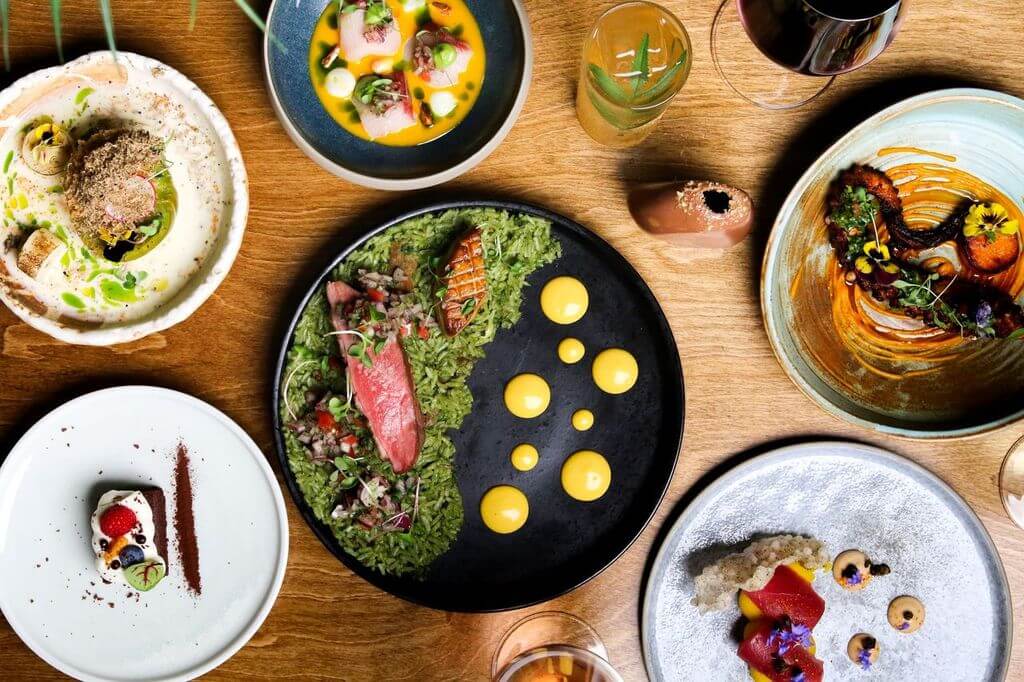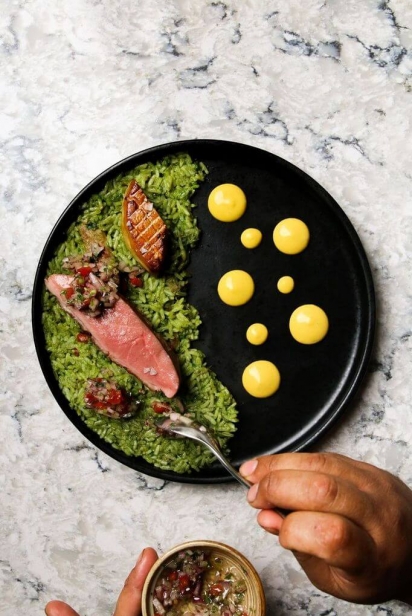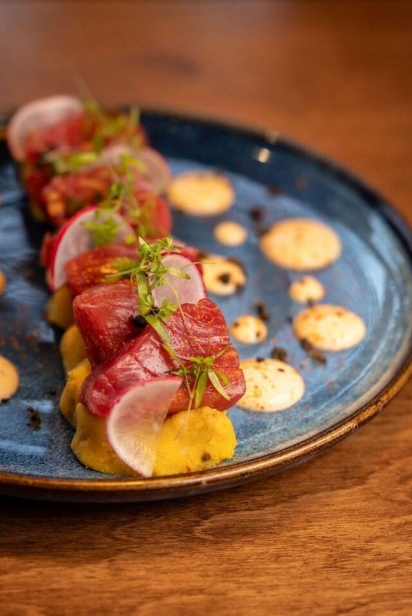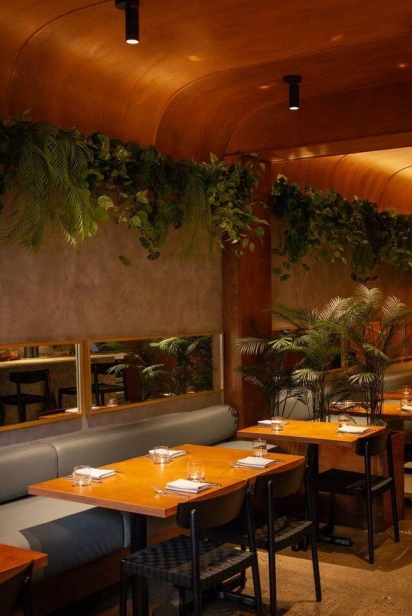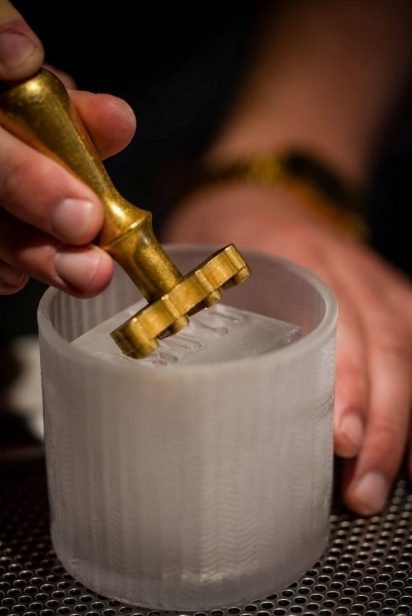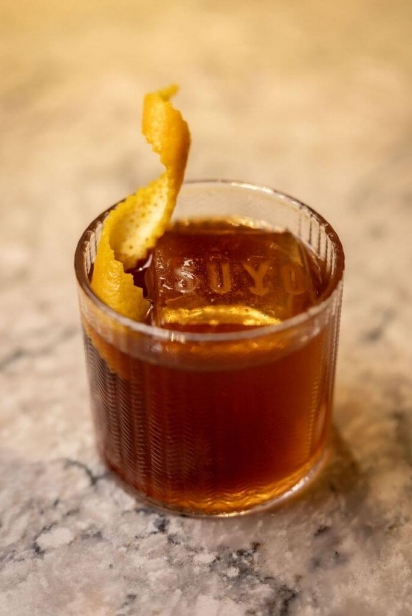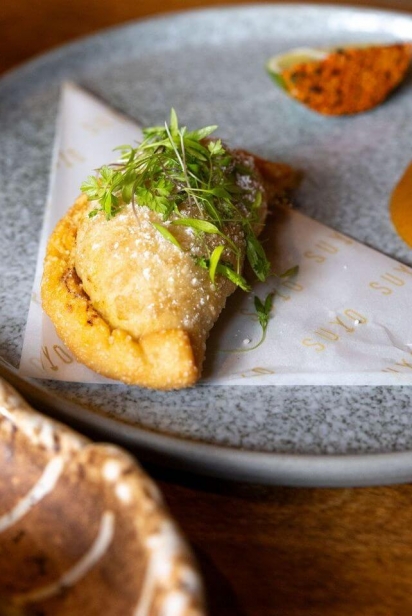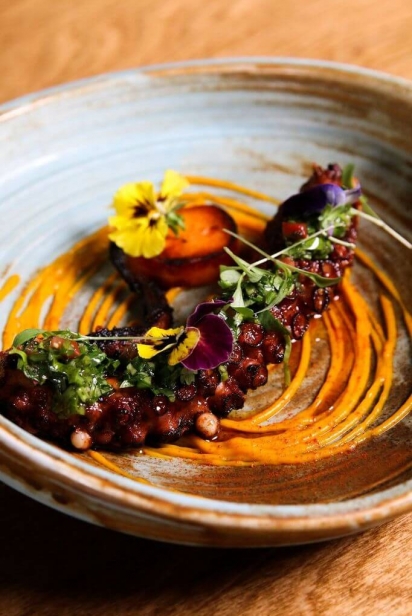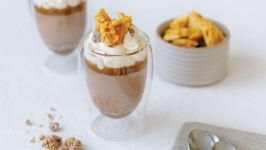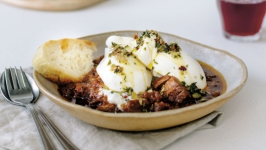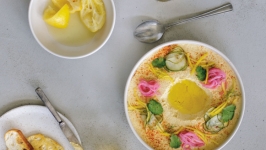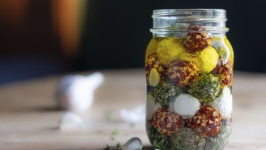Passage to Peru
If you love food, you should probably be planning a trip to Peru right now. It’s not just the spectacular natural beauty that makes this South American country so magical, the towering peaks of the Andes mountains, the sweeping arid plains, the lush tropical rainforest or the more than 3,000 kilometres of South Pacific coastline. Nor is it the way the traces of ancient Indigenous civilizations mingle with newer cultures from Europe, Asia and Africa. It’s the way they all come together on the plate.
To say Peru is bountiful is an almost laughable understatement. This country produces 55 varieties of corn and a whopping 4,000 types of potatoes, several native ancient grains and more than 400 kinds of bread. It has 12 distinct cuisines, including a Chinese-Peruvian style known as “chifa,” a Japanese-Peruvian one called “nikkei” and the Spanish-influenced “criollo” cooking, plus “novoandina,” which combines them all. It is the only country with two entries among the top 10 of The World’s 50 Best Restaurants — Maido at No. 6 and Central at No. 1 — yet you can still enjoy a bowl of tangy, fresh-caught ceviche for just a few soles (Peru’s currency).
But getting to Peru isn’t easy. It’s a 20-hour flight with a couple of stops along the way just to get to Lima before finding your way to Machu Picchu, Cusco, the Sacred Valley or Lake Titicaca.
Or instead you can just head to SUYO Modern Peruvian Restaurant & Bar right here in Vancouver.
“When I see the reaction of people — the welcoming of people to Peruvian culture — it’s beyond expectations,” says Ricardo Valverde, the chef, co-owner and driving inspiration behind this tiny, Michelin-recommended restaurant on Main Street. “I’ve never seen reactions like this before. It’s the whole experience. It’s not just the food. It’s the service people. It’s the environment. And the drinks are great. It’s like you transported yourself to a different place in the world.” No airline ticket required.
‘It just came naturally’
Valverde was not supposed to be a chef. He was supposed to be an engineer like his parents. But here he is anyway, doing his own very personal take on the causas, ceviches, lomo saltado and other dishes he grew up eating, and teaching a new generation of cooks how to do the same.
He grew up one of four kids in a comfortable middle-class family in Lima. “Like any Peruvian family, we loved to eat. Food was very important to us,” he recalls. But it was especially important to young Ricardo: “There was an added excitement every time I ate,” he says with a laugh.
One of his favourite foods was causa, a dish made of layers of mashed yellow potato, chicken or tuna, and flavoured with ají amarillo pepper and lime juice. (Peruvian women created it for hungry soldiers during the 1879 to 1894 Guerra del Pacifico against Chile, “por la causa” — for the cause.) “Potato and chicken salad, you can’t go wrong with that,” Valverde says.
He also loved the sandwiches at a nearby shop. When he was seven or eight, he would watch the cook, Elena, make choripán (baguette filled with chorizo, onions and tomatoes) and wrap it in pretty paper for her customers. “I thought the whole experience was pretty neat and I would go home and do the same thing, just wrapped in newspaper,” he says. “It just came naturally, just watching people cook. Nobody taught me.”
On New Year’s Eve, he would stay up all night with his dad and brother, then in the morning head to a beachside market so they could make ceviche, the way tradition dictates, with sliced red onions, sweet potatoes and a generous squeeze of lime juice, always before noon, when the fish is freshest.
It sounds idyllic, but, he notes, “the economy was always up and down in Lima,” and in 1998, when he was 17, the family moved to Vancouver for a fresh start. A few years later, he found himself at Kwantlen Polytechnic University studying information systems and not exactly loving it. And then he heard about Gastón Acurio, the pioneering Peruvian chef.
“He was the push. When I found out what he was doing in Lima in the early 2000s… I didn’t know anything. I didn’t even know what cuisine was. And then I heard about Gastón, and went to his restaurant, Astrid y Gastón.”
Not long after that, Valverde was having lunch with his best friend at a Cactus Club Cafe and said, “I want to be a chef.”
How food made a nation proud
Gastón Acurio is not just a chef. He is a cultural ambassador, an educator, a leader, an inspiration. He defined modern Peruvian cuisine and set the table for a whole generation of adventurous new cooks through the cooking schools he started, the books he wrote, the TV show he hosted, the farmers he championed, the people he hired, the many people he helped out of poverty. As more than one person told me at Mistura, the food festival he created in Lima, “He made us proud to be Peruvian.”
“He’s the one who changed it all,” Valverde says.
Acurio grew up in a wealthy family, the son of a former prime minister, eating mostly French and Italian food in restaurants, just like all the other well-heeled Limeño families. It was the 1980s, when much of Peru was desperately poor and the Shining Path terrorist group waged brutal guerilla warfare throughout the country. Many young Peruvians left to escape the bloodshed and make their fortunes abroad. But when Acurio’s parents sent him off to Madrid to study law, he dropped out and instead enrolled at Le Cordon Bleu culinary school in Paris, where he would meet his wife, Astrid Gutsche.
In 1994, a year after returning home to Lima and only two after the Shining Path’s leader was captured, beginning the end of the insurgency, the Acurios opened Astrid y Gastón, where they applied elevated French techniques to traditional Peruvian dishes. It was the first high-end restaurant to connect the country’s regional cuisines, to celebrate Peruvian ingredients rather than fancy imports, to recognize the country’s vibrant European/Asian/Mesoamerican fusion tradition, to create the style we now know as “novoandina,” or New Andean.
Astrid y Gastón begat franchises in Chile, Colombia, Mexico and Spain, was recognized in The World’s 50 Best top 20 for three years running and was followed by restaurant concepts including La Mar, Tanta, Panchita, Chicha, Madam Tusan, Bachiche and Papacho’s. Today, Acurio has more than 45 restaurants in 11 countries.
“And you thought Paris was the culinary centre of the world,” Gourmet magazine raved in 2006.
Perhaps Acurio’s greatest contribution, though, has been the chefs he has trained and influenced, like the executive chef at Central, who previously worked at Astrid y Gastón, and the one at Le Mar in San Francisco, who came from a place of deep poverty in the Andes mountains, and Valverde here in Vancouver.
“Gastón came to Vancouver once,” Valverde recalls. That was in 2012, when Acurio spoke at a TED Talk, and Valverde was invited to meet him. “We sat down and I told him he was my inspiration for everything I’ve done. It was amazing to see your hero and sit there with him for three hours. I even drove him to the airport the next day.”
Just a hint of Peru
Not too surprisingly, Valverde’s parents weren’t thrilled to learn about their son’s change in career plans, especially when he had to ask them for the $6,000 deposit for his course at the Dubrulle French Culinary School in Vancouver.
“It wasn’t cheap. That night, I went home, and my parents were on the sofa — I remember it like it was yesterday. My mom, big swallow. Then my dad said, ‘I don’t care if you’re a rich man, but son — ’” Valverde pauses. “They said, just promise me you will do well.”
He did. “It was like I was in Candyland,” he says, and still counts his instructors Julian Bond and Tim Ellison as friends and mentors. After graduation, he worked at Diva at the Met, CinCin Ristorante and Blue Water Cafe, where he rose to the position of chef de cuisine and, every once in a while, slipped a Peruvian-style causa or ceviche onto the menu.
In 2015, he landed his first executive chef role at the high-end, seafood-forward Ancora Waterfront Dining and Patio. “I think a lot of times things happen for a reason. Ancora was my stepping stone to now,” he says. “It did put Peruvian food on the map and gave it a bit more exposure. I have to thank Ancora for that.”
Mind you, he wasn’t actually planning to serve Peruvian food at Ancora. Instead, along with sushi chef Yoshihiro Tabo at the raw bar, he was going to do the kind of elevated fine dining Vancouverites already knew and loved, based on French techniques, local ingredients and Asian influences — and occasionally offer elements of Peruvian cuisine “without calling it that.”
And then Andrew Morrison, the late editor of Scout Magazine, came in to do a pre-opening story.
“Andrew, bless his soul, said, ‘You’re Peruvian and you’re Japanese, so it’s going to be a Peruvian-Japanese restaurant, right?’” The chefs thought he was joking. They were wrong. “The next day he wrote that, and I said, ‘Are you kidding me?’ I already had a menu and I had to tweak it because of that.”
Valverde laughs. Now.
“I was happy at Ancora and was going to stay there forever, but things change. The pandemic came and that’s when I knew I had to do something different. It gave me that time to really focus.” He adds: “I just wanted to be my own boss and make my own food. I knew I was going to open my own restaurant.”
So Valverde worked on his business plan. One day he went for lunch at Homer St. Cafe with his friend Felix Ng, who owns a tech company. “When I told him I wanted to start a restaurant and was looking for a loan, he said, ‘I have the money. I’m in.’”
Pretty quickly, they brought another partner on board, James Reynolds, the front-of-house pro who previously worked at La Buca, Blue Water Cafe and La Regalade, and is now Suyo’s general manager. Valverde also added Owen Chen to the team as sous chef and Max Curzon-Price — the multi-award-winning bartender and epic storyteller from the Botanist — as bar manager. “I knew if I did a restaurant, I wanted to do it with Max,” Valverde says. “We gave him the freedom to do whatever he wanted.” That includes cocktails made with gold, with blood, with fermented pineapple peels, drinks that tell the story of South America in liquid form.
They found a location — the former Slickity Jim’s Chat ‘n’ Chew — and set about reworking it with subtle nods to Peru: tropical plants, gold accents inspired by Incan culture, art that hints at the mysterious pre-Colombian Nazca Lines, the playlist of Bossa Nova and Latin jazz, and of course the name. “Suyo” is a South American Indigenous word meaning “homeland,” and this was the best kind of coming home.
A fraught fusion
Peru is a place of great riches. But it has also often been a place with deep divisions between rich and poor, between the more prosperous Limeños and less fortunate country dwellers, those who would exploit all the country has to offer and, well, everyone else.
In 1526, the Spanish arrived at the height of the prosperous, technologically advanced Incan Empire. Within 50 years, they had conquered the Incas; within 150, the diseases they imported had decimated the local population. The Spanish returned to Europe laden with gold, silver, potatoes, beans, corn, tomatoes and chilis. In turn, they brought rice, wheat, onions, garlic, beef, pork and chicken to Peru, as well as foods such as tacu tacu, a fried rice-and-bean cake introduced by the African slaves who accompanied them.
Peru won independence from Spain in 1821, but the victory was followed by repeated cycles of economic strife, which fuelled the kind of resentments that eventually created the Shining Path.
Meanwhile, newcomers kept arriving.
After slavery was abolished in 1854, Chinese workers filled the labour gap and introduced ginger, scallions and soy sauce in dishes such as arroz chaufa (fried rice), tallarin con pollo (a spicy chicken noodle dish) and lomo saltado (strips of marinated beef stir-fried with onions, parsley and tomatoes, served with fried potatoes).
In 1899, Peru became the first South American country to accept immigrants from Japan, who brought a taste for umami flavours and fish served raw or lightly macerated — think ceviche, tiradito (a lightly spiced sashimi) and a seemingly endless variety of sushi.
All these cultural and agricultural influences created the world’s most exciting fusion cuisine — one that’s not so different from the way we like to dine here in Vancouver. It gave Valverde plenty to work with, in a city hungry for what he was cooking up.
Still, opening Suyo wasn’t easy.
“Opening a restaurant was probably the craziest thing we’ve ever done. I even cried one day,” Valverde admits. “Literally, we didn’t get our bank loan until two months after we opened; we just used our lines of credit.”
Like everyone these days, Valverde struggled to staff his kitchen, and ended up training a group of Peruvian MBA students who had never cooked before. He taught them culinary theory via Zoom, then, he says, “Two weeks before we opened, we came here and then we just started cooking and preparing food. Those were the two weeks I couldn’t sleep. But the one thing they knew, they knew the dishes. They knew the flavours. They knew what it was supposed to taste like.”
Suyo opened on August 25, 2022, with a menu featuring modern takes on the classics: halibut ceviche, tuna causa, scallop tiradito, skewered salmon anticuchero, fried rice with duck, lomo saltado with beef tenderloin, a chocolate tres leches cake that had diners swooning and, of course, the city’s best Pisco Sour.
Just one year later, the Michelin Guide added Suyo to its list of “recommended” restaurants and honoured Curzon-Price with Michelin's exceptional cocktail award. It’s especially remarkable since, as Valverde notes, “only two of us have cooked for more than 10 years.”
All the recognition is nice, he says, but it’s not the point. “It’s just fuel to keep us going. I’m beyond being proud of me. I have to do a good job. It makes me happy for the people around me, my parents, my wife, my son,” he says. “My mom told me at one point — my mom never sugar-coats anything — she once told me, ‘I was so worried about you… It’s not the life I envisioned for you, but I’m happy, I’m proud.’ For sure they are very happy to see my dream come true.”
SUYO Modern Peruvian
3475 Main St., Vancouver
suyo.ca | 604.322.1588 | @suyorestaurant


